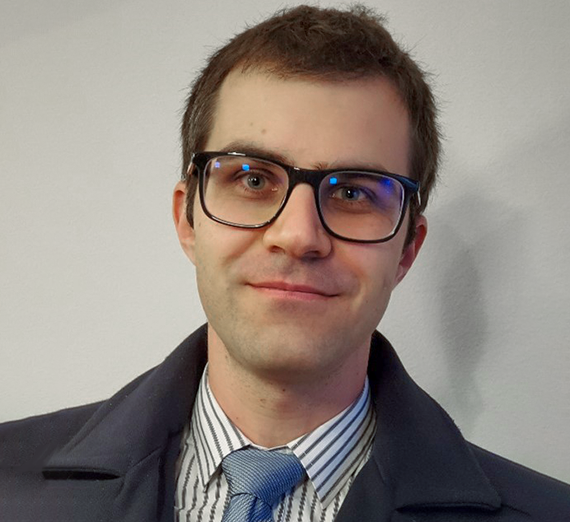Event Details
Date & Time
Wednesday, Apr 17, 2024 4:00 PM - 5:00 PM
Event Link
Learn more about the Renouard Lectures
Department
Location
Bollier 120
Event Type & Tags
About This Event
To the Mesoscale and Beyond! Capturing Complex Damage Mechanisms in Composites via Simple, Physics-Based, Discrete Mathematical Models of Fibers and Matrix
Unidirectional (UD) and 2D/3D textile composites are increasingly being employed in systems across many industrial sectors including aerospace, automotive, and wind energy. This is due to the excellent specific mechanical properties and tailorability of composites, paving new avenues for structural optimization and weight savings.
One of the challenges with the simulation of the mechanical response of composite materials is that their damage mechanisms depend strongly on the material micro- and mesostructures. Phenomena such as fiber micro-buckling and kinking in compression or fiber scissoring and matrix microcracking in shear in UD composites are only a few examples. Homogenized continuum models that describe these mechanisms are extremely mathematically complex, lack generality, and can only be used to fit experimental data. In fact, the constitutive equations compensate for not modeling fibers and matrix explicitly by introducing several complex equations and fitting parameters of unclear physical meaning. This makes model calibration extremely cumbersome and limits the predictive capability of the model.
In reality, the modeling of damage and fracture in composite materials does not have to be complex if the physics of the micro-and mesostructures is simulated explicitly. This is the goal of the Discrete Model for Composites (DM4C), a novel discrete mesoscale modeling framework that simulates the mechanical behavior of UD and textile composites. Specifically, this framework is only based on physical laws and does not depend on element erosion to simulate fracture. As it will be shown in this presentation, in DM4C, fibers, groups of fibers, and tows are simulated explicitly as Timoshenko beam elements while the matrix is described by vectorial constitutive laws defined on the facets of a tetrahedral mesh anchored to the nodes of the beam elements. These vectorial laws describe both the elastic and inelastic behavior of the matrix, including the traction-separation laws governing the fracture process and the friction between facets governing the compressive behavior. Thanks to the facet-based formulation, fracture is modeled in a discrete way and the need for element erosion can be avoided. Furthermore, since fibers and matrix are now simulated explicitly, the constitutive laws of each material can be physics-based, simple, and with clearly defined material parameters.
To demonstrate the predictive capability of the proposed framework, simulations of several typical damage mechanisms in composites will be compared to experimental data such as shear band formation in transverse compression, fiber micro-buckling and kinking in longitudinal compression, and sub-critical matrix microcraking in off-axis layers.
About the Speaker
Dr. Salviato is an associate professor in the William E. Boeing Department of Aeronautics and Astronautics of University of Washington where he is the PI of the laboratory for Multiscale Analysis of Materials and Structures (MAMS). He also serves as the director of the UW Advanced Composites Center (ACC) and the FAA-sponsored Advanced Materials in Transport Aircraft Structures (AMTAS) center of excellence. Before joining the University of Washington in 2015, Dr. Salviato obtained a Ph.D. in Theoretical and Applied Mechanics in 2013 from the University of Padova (Padova, Italy) with a doctoral dissertation focusing on the experimental characterization and computational modeling of polymer nanocomposites. He later joined the Department of Civil and Environmental Engineering at Northwestern University as postdoctoral scholar (2013-14) and research assistant professor (2014-15).
Dr. Salviato’s research and teaching interests lie in the area of Computational Mechanics and Fracture Mechanics of Quasibrittle Solids. His goal is understanding the mechanical behavior of materials and structures at multiple length-scales through the formulation of advanced computational and analytical approaches, and new experimental techniques. He believes that the next-generation, damage-tolerant infrastructure will be enabled by the elimination of the old dichotomy between the concepts of “structure” and “material”. His work has been funded by several agencies and industrial sponsors including the Federal Aviation Administration, the National Science Foundation, the Air Force Research Laboratory, DoE, and Boeing.
In 2017, Dr. Salviato received the prestigious ASME Haythornthwaite Young Investigator Award for “excellence in theoretical and applied mechanics”. In 2020, he was the recipient of the DSTech Young Composites Researcher Award, an honor bestowed by the American Society for Composites on the most promising young researchers in the field of composites. In 2021, Dr. Salviato was selected by the National Academy of Engineering (NAE) among the most promising young engineers to participate in the prestigious 2021 NAE US Frontiers of Engineering Symposium. He was later selected as an NAE Grainger Foundation Frontiers of Engineering Grant awardee. In 2021, Dr Salviato published the book “Quasibrittle Fracture Mechanics and Size Effect: A First Course” (Oxford University Press) with co-authors Dr. Le (University of Minnesota) and Dr. Bažant (Northwestern University).

